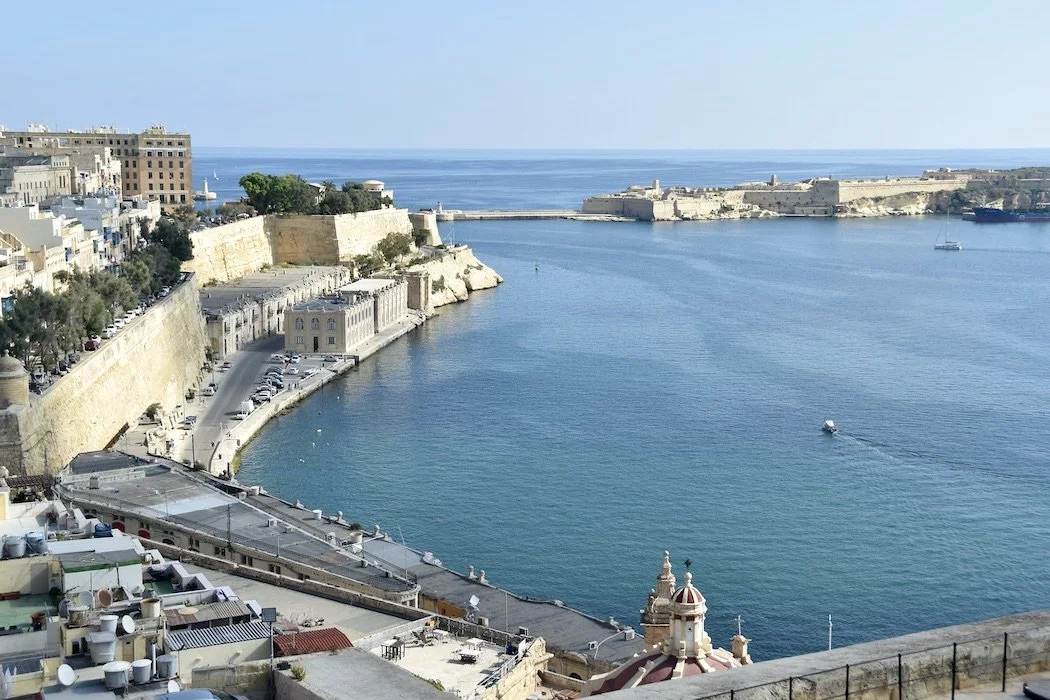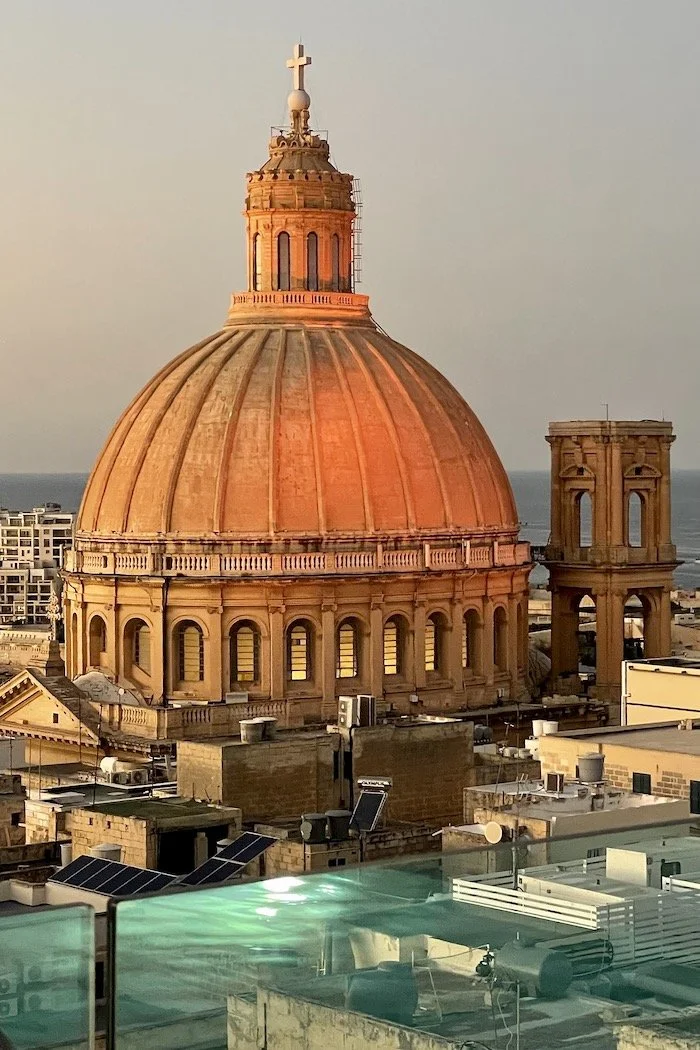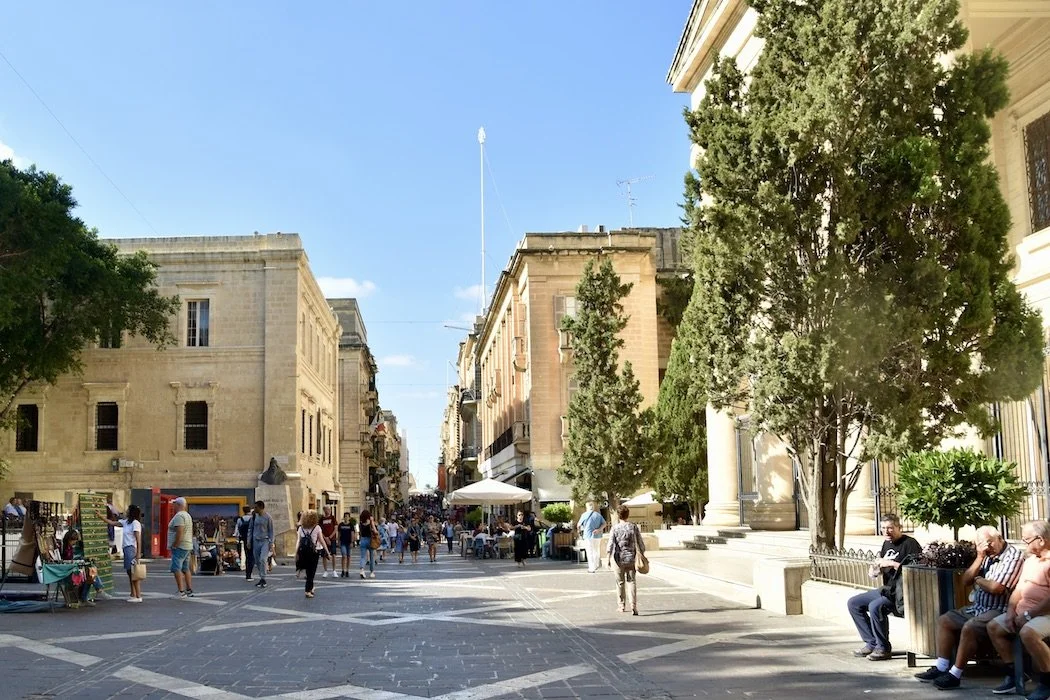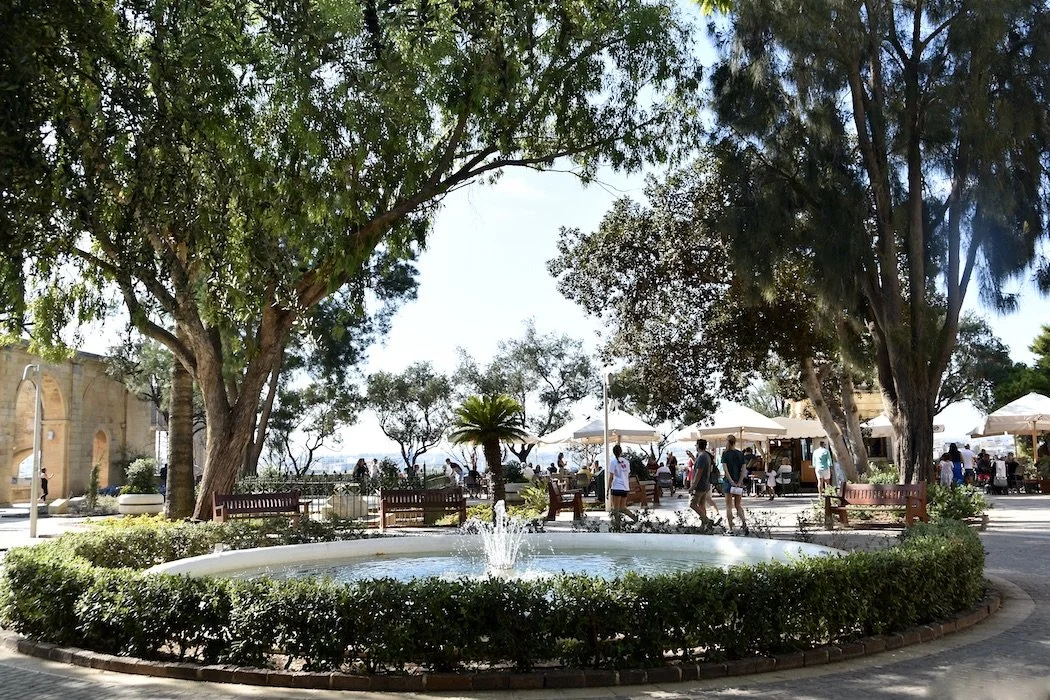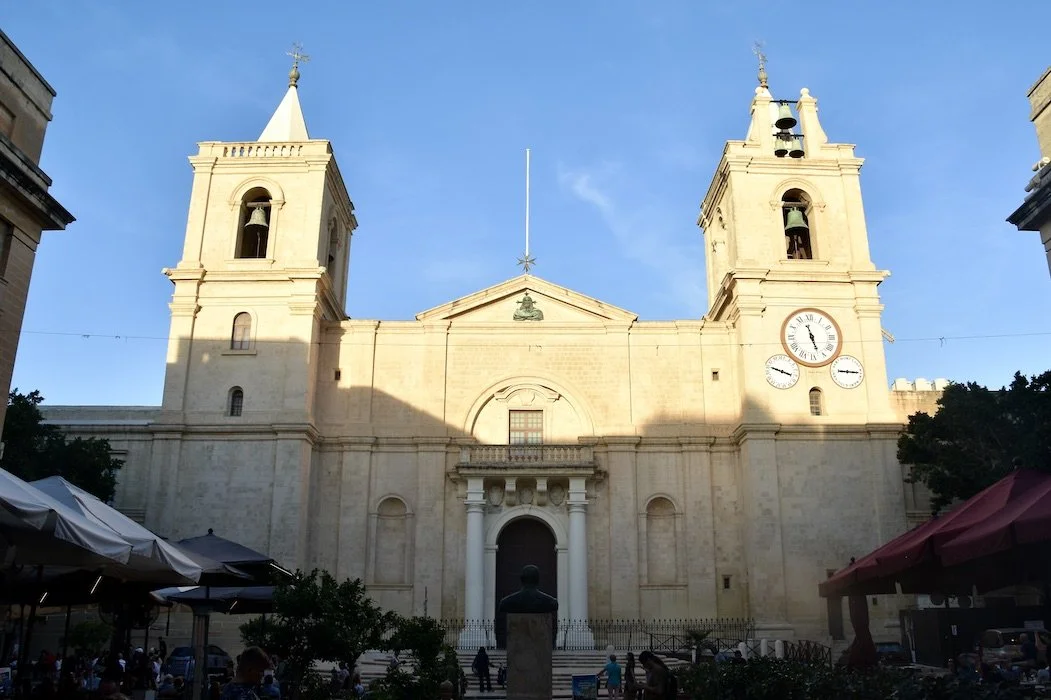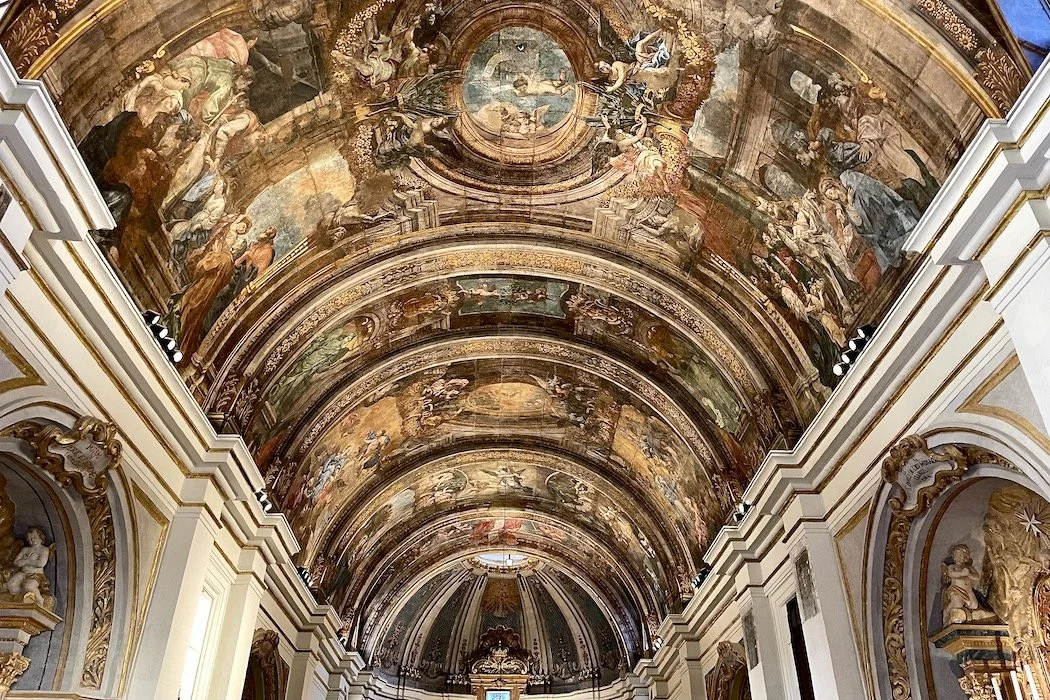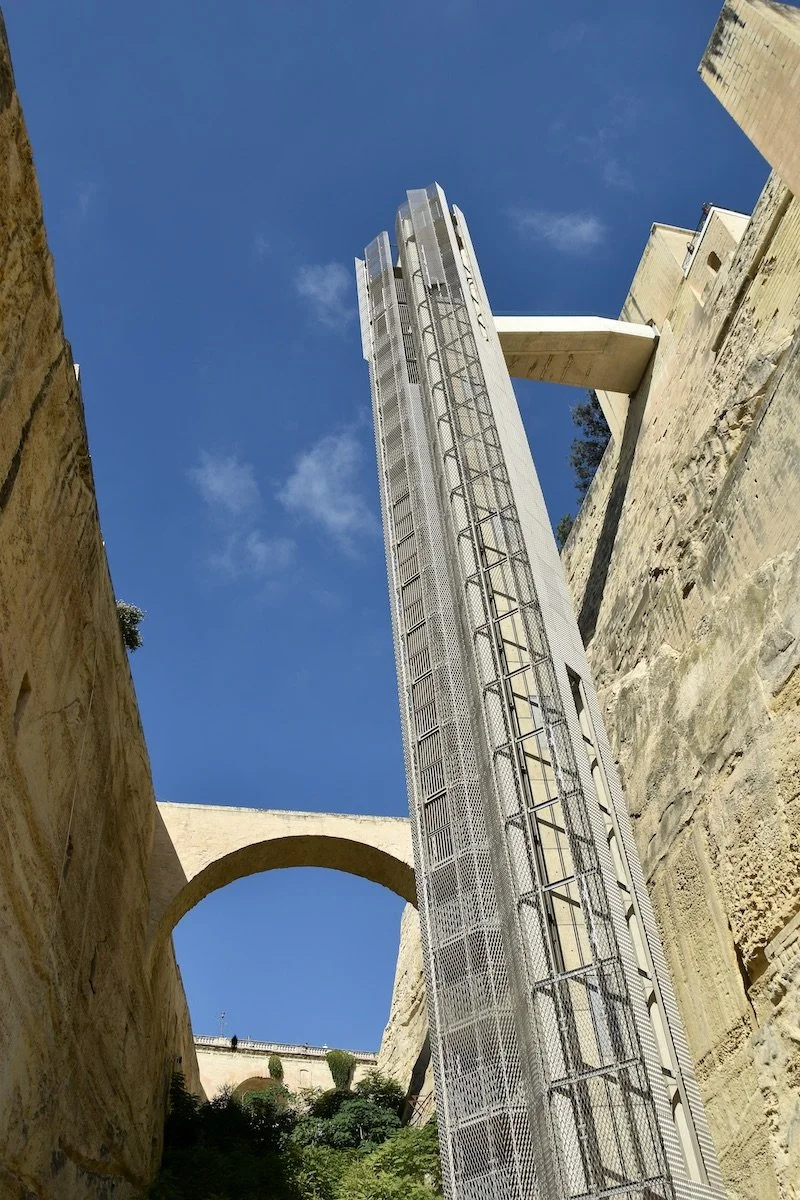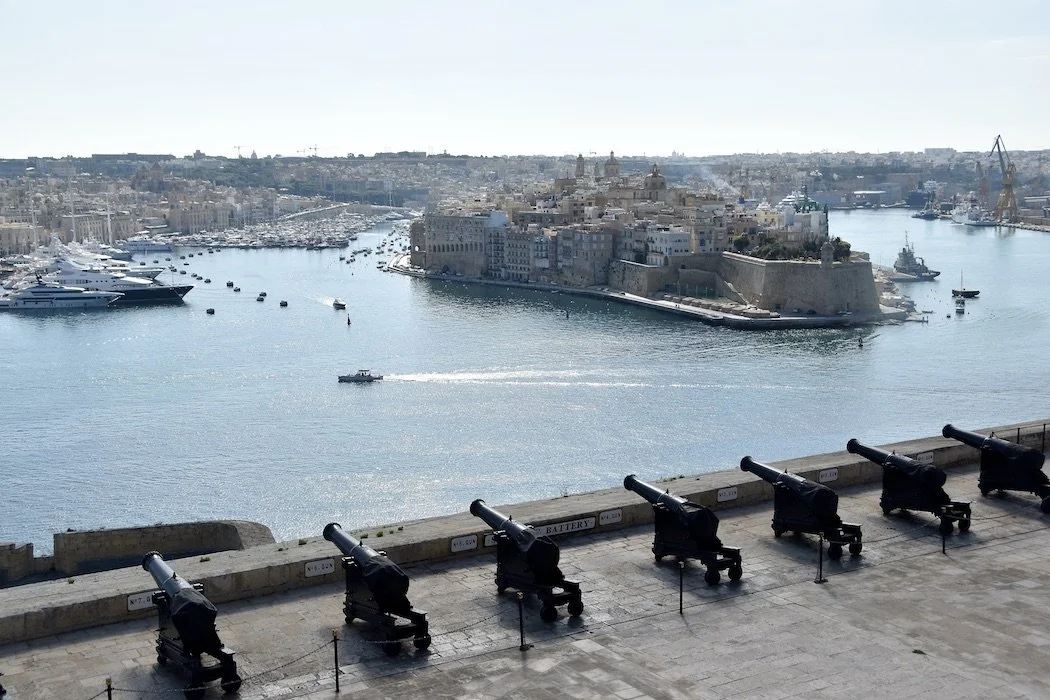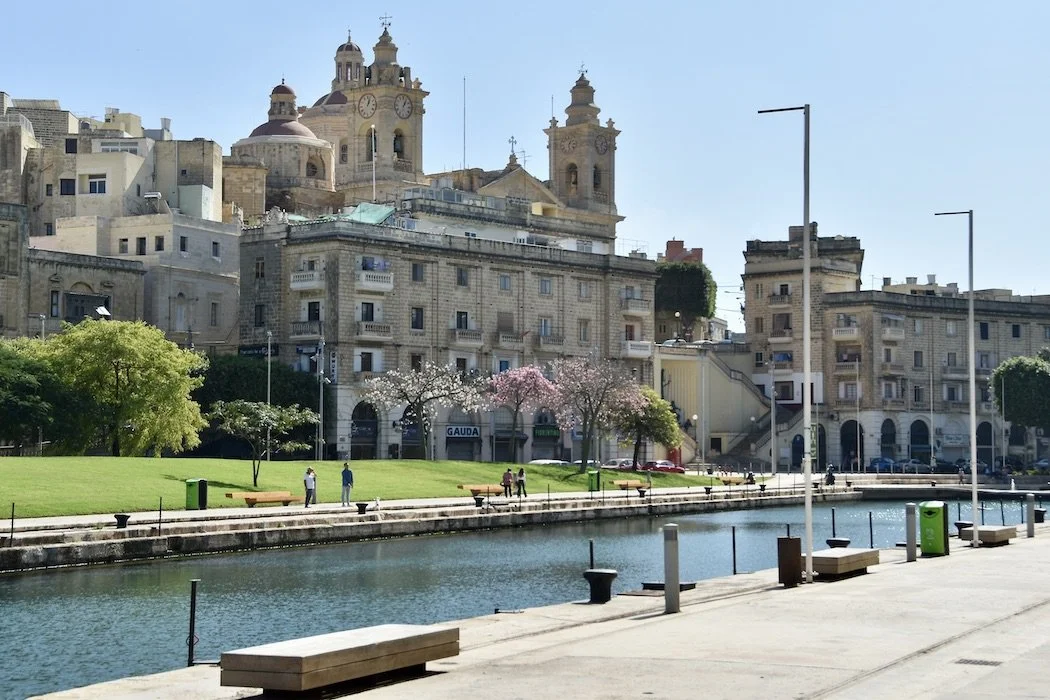Journey to low-key Valletta
View of the entrance to Valletta’s Grand Harbor from the battery.
…”to travel the world under the radar… low key… just to explore”. –Zach Efron
A unique geographic location in the middle of the Mediterranean Sea between Europe and Africa means that Malta and its capital Valletta (It-Belt) have a long history of continuous habitation since pre-historic times. Many conquerors have sailed past and stopped since the Phoenicians, including the Romans and Byzantines in ancient times, the Arabs, Normans, and Knights of St. John during the Middle Ages, and finally the French and British in modern times. It was the Knights who established this walled city on the peninsula in the 1500s, and the British from whom the Maltese became independent in 1962.
The city’s noble architecture, Baroque at first glance, features many past eras: Roman-style columns from a destroyed colonial opera house stand side by side with the modern Renzo Piano-designed Parliament, and ancient homes with colorful alcove windows mingle with towering medieval bastions and massive stone fortifications. Even language reflects history here, as both Maltese, which is understood by many Arabic speakers, and English are the official languages. The cuisine is also a true fusion of all the Mediterranean flavors with some British and French thrown in.
Off-season is the time to visit Malta for the low-key atmosphere, comfortable weather, and a leisurely exploration of the wide streets, especially Republic and Merchant Streets, that lead from City Gate to Fort Saint Elmo, now Valletta’s National War Museum. It is a city of palaces and piazzas, among them the Auberge de Castille et Leon, formerly the seat of the Knights of Malta, and the Grandmaster’s Palace, the seat of power, which respectively house offices of the Maltese Prime Minister and President. The nearby Upper Barrakka Gardens, next to the Main Guard palace, provide shaded seating around a fountain and stunning views of the Grand Harbor from the terrace where, at noon and 4 PM, the gun salute is a sight to see. The Grand Harbor is an impressive port that retains its ancient character, while the boats that dock there nowadays are pleasure yachts.
Between St. John’s Square and Great Square, St. John’s Co-Cathedral, commissioned in 1572 by the Grand Master of the Order of the Knights Hospitaller, is the jewel in Malta’s crown. The simplicity of the façade contracts with the rich Baroque interior. Rivaling Rome’s churches, it houses works of Caravaggio and tombs under the marble floor. Other grand contemporaneous churches include the huge-domed Basilica of Our Lady of Mount Carmel. From Upper Barrakka, steps and a steep hill descend to the water and the beautiful Lower Barrakka Gardens, near the lively fish market.
Across the harbor by water taxi from the Barrakka Lift lie The Three Cities, the cradle of Maltese history: Vittoriosa (Il-Birgu), Senglea (L-Isla), and Cospicua (Bormla), where an abundance of modern yachts dock in the harbors next to cobbled streets and ornate ancient churches. This was the first home of the Knights of St. John who built protective a fortress for all who settled here. Yet it was vulnerable during war, so after winning the Great Siege of 1565, Grand Master Jean de Vallette moved headquarters to the Sciberras Peninsula, giving the new town his name. The view back to Valletta, especially at sundown is breathtaking.
Don’t miss:
Taking the Barrakka Lift from the Upper Barrakka Gardens down to the harbor and then the ferry across to The Three Cities.
Lunch Tip:
The Embassy Valletta Hotel for delicious food at the rooftop bar and an incredible view.
Dinner Tip:
Adesso, a cozy bistro on South Street for superb Maltese dishes including rabbit, a local tradition.
Bedtime:
The Osborne Hotel in a historical palace in the heart of the old city, with charm and character.
Subscribe for inspiration to have my posts drop directly into your inbox. *If you enjoyed what you read, please share this post with like-minded travelers.*
*All photographs are mine, taken with my Nikon D5600 or iPhone 12 Pro.*

